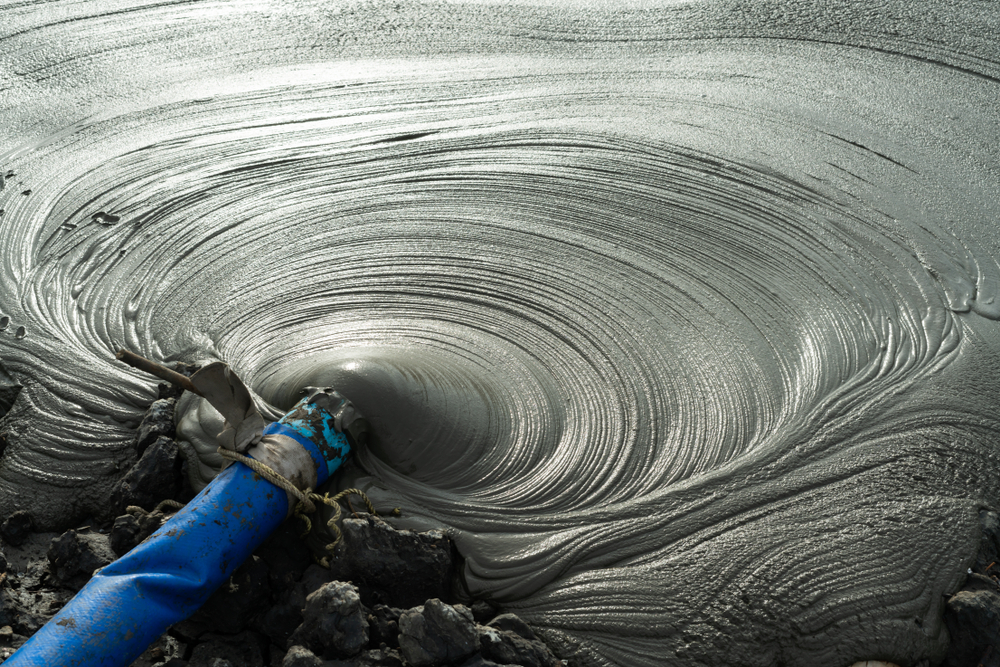IP 17 Filtration Characteristics of Drilling Muds Test
The IP 17 filtration characteristics test is a critical procedure in oil and gas exploration and production. This test evaluates the ability of drilling muds to retain solids while allowing fluids to pass through, ensuring optimal performance during drilling operations.
Drilling mud plays an essential role in maintaining wellbore stability and facilitating efficient drilling processes. The filtration characteristics directly impact the stability of the borehole wall by controlling the amount of fluid loss into the formation. Understanding these characteristics is crucial for managing operational costs and optimizing drilling efficiency.
The IP 17 test method, as specified in ISO standards, provides a standardized approach to assess filtration properties. It involves filtering the mud under controlled pressure conditions and measuring the volume of filtrate over time. This data helps determine the suitability of different mud formulations for various drilling environments.
Specimen preparation is critical before conducting this test. The drilling mud sample must be collected from the rig floor, ensuring it represents the actual fluid used during operations. Prior to testing, the sample should be allowed to settle, and any large particles removed by centrifugation or filtration. This step ensures accurate measurements of filtration rates.
The equipment required includes a pressure cell capable of applying consistent hydrostatic pressure, a graduated cylinder for measuring filtrate volume, and a timer for recording the duration of filtration. The pressure applied during testing typically ranges from 200 to 500 psi (pounds per square inch) depending on the depth at which drilling is taking place.
During the test, the mud sample is placed in the pressure cell and subjected to increasing hydrostatic pressure until a predetermined volume of filtrate has passed through. The filtration rate is then calculated based on this volume and time taken. Multiple samples may be tested under different pressures to assess how filtration characteristics vary with depth.
Interpreting the results involves comparing them against industry benchmarks or previous data for similar drilling environments. A higher filtration rate indicates poorer mud performance, suggesting more fluid loss into the formation which can lead to wellbore instability and reduced drilling efficiency.
In practice, this test is performed regularly throughout a drilling campaign to monitor changes in mud quality due to additives, wear, or other factors. By understanding how filtration characteristics evolve over time, operators can make informed decisions about when to replace or adjust the mud composition.
The IP 17 test provides valuable insights into the mechanical stability of the borehole wall and helps prevent costly downtime caused by stuck drill bits or clogged nozzles. Ensuring that drilling muds meet specified filtration characteristics is essential for safe, efficient operations in oil and gas exploration.
Industry Applications
| Application | Description |
|---|---|
| Wellbore Stability Evaluation | Evaluates the ability of drilling mud to maintain wellbore stability by controlling fluid loss into formations. |
| Mud Performance Optimization | Assists in selecting the most appropriate type and concentration of additives for specific drilling conditions. |
| Drilling Efficiency Improvement | Aids in adjusting mud properties to enhance drilling speed while maintaining borehole stability. |
| Risk Management | Helps identify potential risks associated with poor filtration characteristics, such as stuck drill bits or lost circulation zones. |
| Mud Additive Selection | Facilitates the selection of additives that improve mud performance without compromising its filtration characteristics. |
| Environmental Impact Assessment | Evaluates how different mud formulations affect the environment, aiding in more sustainable drilling practices. |
Quality and Reliability Assurance
The IP 17 filtration characteristics test is a cornerstone of quality assurance programs for oil and gas operations. Ensuring that drilling mud meets the required standards not only enhances operational efficiency but also contributes to safer work environments.
Achieving consistent results across multiple tests requires strict adherence to standard procedures. Laboratories must be equipped with calibrated equipment and trained personnel who can consistently reproduce test conditions. Regular calibration of instruments, such as pressure cells and timers, is essential to maintain accuracy.
Quality assurance also involves implementing robust data management practices. All test results should be recorded accurately and stored securely for future reference. This documentation is vital for audits and compliance checks by regulatory bodies or internal stakeholders.
In addition to technical proficiency, quality assurance encompasses continuous improvement initiatives. Regular reviews of testing protocols can identify areas for enhancement, ensuring that the latest industry best practices are incorporated into daily operations. Collaboration between laboratory technicians, engineers, and field personnel fosters a culture of excellence in mud technology.
By focusing on quality and reliability, laboratories contribute significantly to the overall success of oil and gas projects. Consistent adherence to IP 17 standards minimizes risks associated with poor filtration characteristics, leading to more successful drilling campaigns.
Customer Impact and Satisfaction
- Enhanced Operational Efficiency
- Reduced Downtime
- Increased Safety
- Better Resource Utilization
- Environmental Sustainability
- Cost Savings Through Optimized Additive Use
- Precise Data for Decision-Making
The IP 17 filtration characteristics test has a direct impact on customer satisfaction by ensuring that drilling mud meets stringent quality standards. When operators can rely on reliable data from this test, they are better equipped to make informed decisions about mud formulations and operational strategies.
Customers benefit from reduced downtime caused by equipment failures or stuck drill bits due to optimal filtration characteristics. Enhanced safety measures result in fewer accidents and injuries during drilling operations. Improved resource utilization leads to cost savings through more efficient use of additives and other materials.
Environmental sustainability is also improved as the test helps select mud formulations that have minimal adverse effects on ecosystems. Precise data from IP 17 tests provide valuable inputs for decision-making, ensuring that all aspects of drilling operations are optimized for both performance and compliance.





